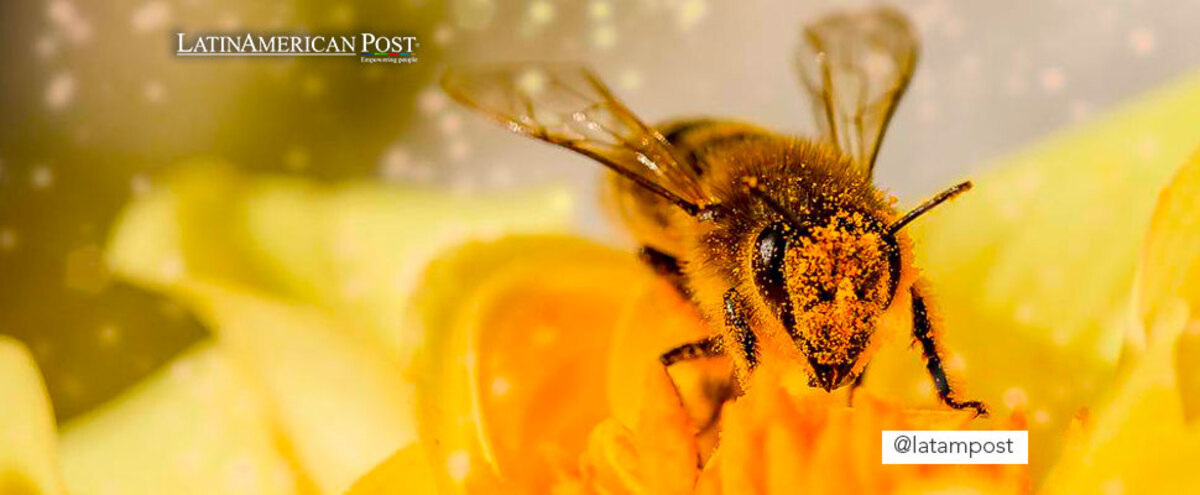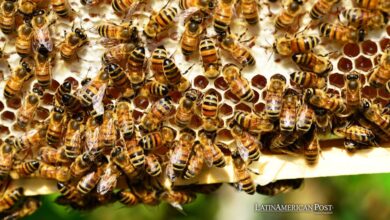Pollinators At Silent Risk Of Extinction: An Environmental Catastrophe
About 35% of invertebrate pollinators are at risk of disappearing. Its decline is a global problem that threatens the food supply of humanity and the well-being of ecosystems. What are the causes and how can we help?

Photo: Pixabay
LatinAmerican Post | María Fernanda Camisay
Escucha este artículo
Leer en español: Polinizadores en riesgo silencioso de extinción: una catástrofe ambiental
A world without them would not be the same. Much of the food we consume and the planet's biodiversity are closely related to the silent work of pollinators. Alarmingly, there has been a drastic decline in many of these species in recent years and this trend, far from reversing, continues to worsen. Intensive agricultural practices, pesticides, loss of natural habitats to climate change are the result of different human activities that pose serious problems for pollinator communities.
Silent pollination
Pollination is an essential process that allows flowering plants, including food crops, to produce fruit and seeds. Certain animals indirectly collaborate with this natural phenomenon through their diet, accidentally transporting pollen from one flower to another. According to the Food and Agriculture Organization of the United Nations (FAO), "about two thirds of food production depends, to some extent, on pollination by animals", mainly insects such as bees, butterflies, flies and beetles.
Among pollinating insects, wild and domestic bees play a predominant role in maintaining food security , increasing their productivity and yield. According to the FAO, 71 of the 100 cultivated species, which provide 90% of the world's food, are pollinated by bees.
However, pollinators not only contribute to a balanced diet, but also perform other key ecological services. On the one hand, by promoting plant life, they provide abundant amounts of fruits, seeds and new plants that are the basis of food for various animal species, while enriching and protecting the soil against erosive agents in the environment. On the other hand, and no less important, they behave as true sentinels for emerging environmental risks.
In particular, bees are excellent bioindicators of the health of local ecosystems. Given that small disturbances in their habitat can have a significant impact on their viability, they are ideal insects to alert about environmental changes. Hence, variations in the availability of floral resources or quiet areas for nesting, caused, for example, by human actions, produce crucial changes in the number and diversity of bees, and by extension, in crop production.
Allies in danger
Certainly, pollinators are essential in the life cycle of various animals and of nature in general. Despite their relevance, their continuity in the world is in serious danger. In this regard, the United Nations (UN) warns that about 35% of invertebrate pollinators – especially bees and butterflies – are on the red lists of threatened species.
A recent study, published in the journal Nature Ecology & Evolution in 2021, highlights that there are several factors that influence the pollinator crisis, the order and magnitude of which differ according to region. In the case of Latin America, changes in the landscape, land management and the use of pesticides are the most relevant elements of this decline . Other factors such as climate change have a lower relative weight, probably, according to the researchers, due to a slower and not so immediate effect that will gain more strength over time.
Within this framework, increasing urbanization and intensification of agricultural methods have been shown to destroy valuable natural habitats. Around the disappearance of these environments, there is a reduction in the diversity of wild flora and, consequently, in nesting areas and food resources for pollinators. If the widespread use of pesticides is added to this, the picture becomes even more critical. The current use of chemical products applied to crops affects insects through pollen and nectar, as well as through the air, soil and water. Whether at high or low doses, pesticides kill or weaken these little critters, even when they are not specifically targeted.
That said, the scientists stress that the risks associated with each factor are not the same in all parts of the world. Unlike developed countries, it happens that vast biogeographical regions of Latin America are actively being transformed by ever larger and more aggressive farms. Consequently, the continuing loss of natural environments and pollinator communities are negatively impacting crop yields and regional economies . At the same time, they destabilize the constitution of habitats and condition the only means of subsistence of native indigenous peoples.
Also read: One In 10 People Suffer From Hunger In The World
What can we do to save bees and other pollinators?
In search of solutions to reverse this situation, FAO together with the Secretariat of the Convention on Biological Diversity (CBD) are implementing a strategic plan of action, whose objective is to promote a set of coordinated measures throughout the world to protect pollinators and adopt friendly practices that do not compromise pollination services. In this sense, a substantial issue is awareness of the diversity of these organisms present in each place.
The promotion of organic agriculture, a lower use of pesticides and the conservation of natural habitats are actions that favor the heterogeneity of the landscape, while providing optimal conditions for different pollinating species to feed, grow and reproduce.
Without a doubt, safeguarding pollinators is an important challenge that implies the responsibility and commitment of various parties, both international organizations and the governments of the countries to stimulate less invasive and more sustainable methods, as well as beekeepers and farmers to carry out the practice. Similarly, the contribution of society is valuable and helps to make a difference, whether it is caring for forest ecosystems, supporting producers who develop good environmental practices, or even cultivating native plants that bloom at different times of the year.




